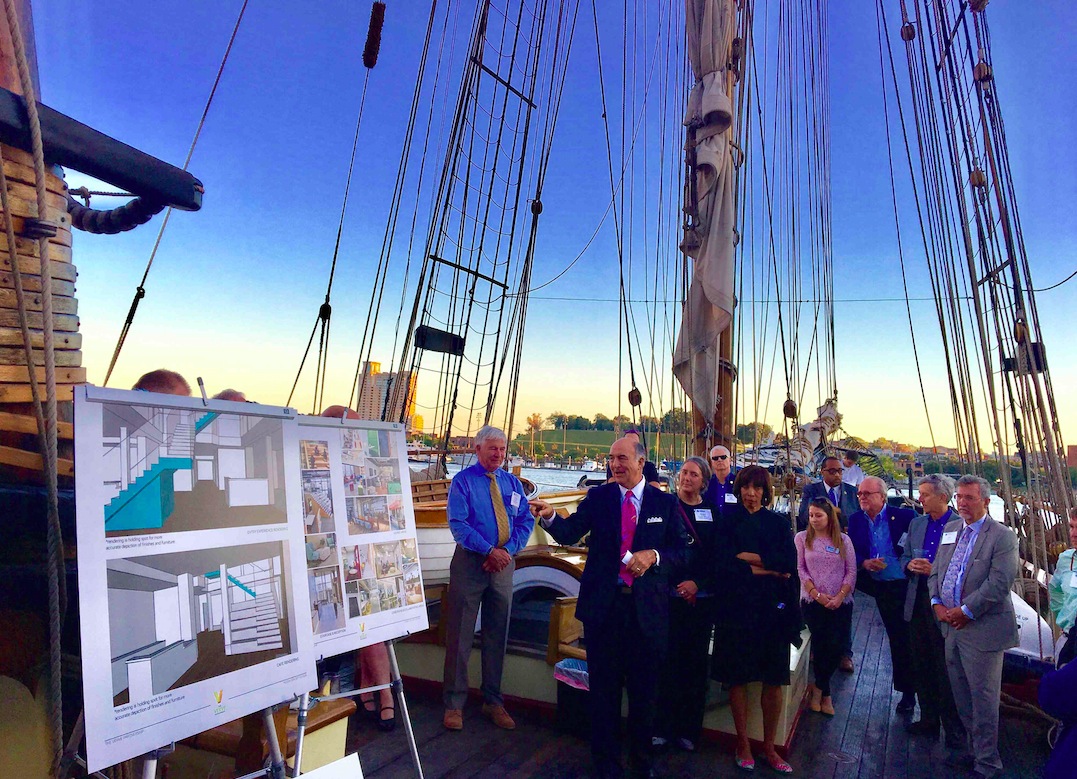Howard County is setting an example others should follow.
So says R. Michael Gill, the jocular Maryland Secretary of Commerce. He praised Howard County Executive Allan Kittleman and Howard County Economic Development Authority CEO Larry Twele for their stewardship of a cohesive strategy.
In part, Gill was pointing to the recently unveiled Gateway Innovation District, a plan Kittleman and Twele have developed to further consolidate an array of Howard County economic development efforts in one place. The Gateway project is suburban Howard County’s response to the ‘innovation district’ model of density. Leaders think their county’s split between the Baltimore and D.C. business and tech communities can be its strength, by bridging them both with a more consolidated one-stop-shop kind of offering of resources for growth companies.
The plan is centered around what is being called the Gateway Innovation Center (6751 Columbia Gateway Drive), a county-owned building on a 920-acre stretch of land that leaders want further developed. A year from now, after relocating several current tenants and renovating, three of the building’s five floors will house the HCEDA, Howard Tech Council, the Maryland Center for Entrepreneurship, a business resource center and a satellite location of the Howard Community College, said Twele.
Gill, Kittleman, Twele and other stakeholders were glad-handing Monday night to unveil the new renderings of the planned 50,000 square foot “vertical stack of economic development, workforce development and innovation,” as described by project designer Kelly Ennis, who credits both Betamore locations to her portfolio. (It’s on this large undeveloped campus where the Howard County Amazon HQ2 bid is focused, though there’s also a Columbia concept too, said HCEDA spokesman Brian Sheavly.)
Interestingly, Gill, who must already be very accustomed to navigating the waters of Maryland’s patchwork of many intersecting tech councils, had another way the Howard County economic development contingent was serving a convenient example. They appear to be playing very nicely with their surrounding counties.
“This isn’t just about Howard County,” said Kittleman, who is presently running a re-election campaign for an office that is decidedly focused there. “This is going to have real regional impact.”
The optics of their private event certainly made the case.
Held on the quaint Pride of Baltimore moored in the Inner Harbor, after Kittleman spoke, Mayor Catherine Pugh boarded and gave her own brief remarks to the two-dozen officials present.
“Welcome to Baltimore,” said the city’s chief executive to polite laughs. “We have to have a regional approach to economic growth.”
When the speeches were done, Pugh and Kittleman embraced and Gill shook hands with first-term Cecil County Executive Dr. Alan McCarthy, who made the more than hour drive for the event. Representatives of state-backed investment fund TEDCO and University of Maryland Baltimore County were there too. The message was clear: Howard County is updating its countywide economic development strategy by building itself a new headquarters that its leadership thinks will benefit more of Maryland than its borders can hold back.
“We can be a bridge between business and tech in D.C. and Baltimore,” said Twele, the HCEDA CEO. Howard Tech Council Executive Director Tracy Lee Turner echoed the regional approach.
“We’re most effective when we’re working together,” Turner said, amid light fare and drinks provided by HCEDA on board the vessel with beautiful early fall weather. The word innovation was used frequently, citing the event’s timing with Baltimore Innovation Week, but this reporter may have heard that other oft-invoked buzz word “collaboration” as much.
That issue of cross-jurisdiction collaboration is a sticky one. Maryland is a patchwork of economic development groups, funded by elected officials who are held account by voters who can have narrow interests. No doubt Secretary Gill, with his statewide imperative, was glad to see those several stakeholders on the same boat (forgive the pun).
New to the public sector and a champion of growing private sector employment in Maryland, Gill rattled off the successes he’s seeing across Maryland, including Baltimore wins like creative bursts in Station North and corporate development in Harbor East. He noted direct ties to successes elsewhere in the state, too, including Howard County, as Maryland gets more competitive nationally. But the state shouldn’t stop there, Gill said. Some 300 Canadian companies have offices in Maryland, he offered as an example, “and I think there can be 300 more.”
With regional connectivity, he just gets busier, Gill implied. Unlike a 16-game NFL season, “I’ve learned economic development is a 365-game, 24-hour sport, every year.”
Join the conversation!
Find news, events, jobs and people who share your interests on Technical.ly's open community Slack

Baltimore daily roundup: Mayoral candidates talk tech and biz; a guide to greentech vocabulary; a Dutch delegation's visit

Baltimore daily roundup: Medtech made in Baltimore; Sen. Sanders visits Morgan State; Humane Ai review debate

Baltimore daily roundup: An HBCU innovation champion's journey; Sen. Sanders visits Morgan State; Humane Ai review debate


